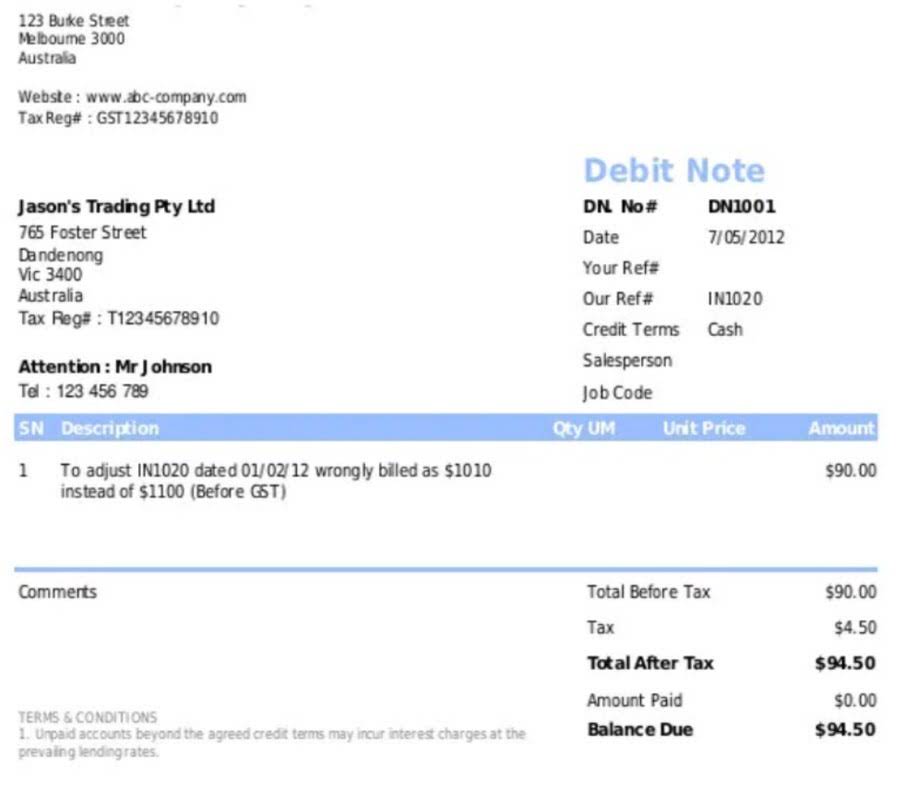
This occurs because every transaction must have the debit amounts equal to the credit amounts. For example, if a company borrows $10,000 from its local bank, the company will debit its asset account Cash for $10,000 since the company’s cash balance is increasing. The same entry will credit its liability account Notes Payable for $10,000 since that account balance is also increasing. So for example there are contra expense accounts such as purchase returns, contra revenue accounts such as sales returns and contra asset accounts such as accumulated depreciation. Expenses normally have debit balances that are increased with a debit entry.

Income Statement

An allowance granted to a customer who had purchased merchandise with a pricing error or other problem not involving the return recording transactions of goods. If the customer purchased on credit, a sales allowance will involve a debit to Sales Allowances and a credit to Accounts Receivable. Double Entry Bookkeeping is here to provide you with free online information to help you learn and understand bookkeeping and introductory accounting. Debit simply means on the left side of the equation, whereas credit means on the right hand side of the equation as summarized in the table below.
- Revenues and gains are recorded in accounts such as Sales, Service Revenues, Interest Revenues (or Interest Income), and Gain on Sale of Assets.
- Insurance Expense, Wages Expense, Advertising Expense, Interest Expense are expenses matched with the period of time in the heading of the income statement.
- Sales are reported in the accounting period in which title to the merchandise was transferred from the seller to the buyer.
- For example net sales is gross sales minus the sales returns, the sales allowances, and the sales discounts.
- These accounts normally have credit balances that are increased with a credit entry.
Examples of Accounts with Debit Balances

It should be noted that if an account is normally a debit balance it is increased by a debit entry, and if an account is normally a credit balance it is increased by a credit entry. So for example a debit entry to an asset account will increase the asset balance, and a credit entry to a liability account will increase the liability. A contra revenue account that reports the discounts allowed by the seller if the customer pays the amount owed within a specified time period. For example, terms of “1/10, n/30” indicates that the buyer can deduct 1% of the amount owed if the customer pays the amount owed within 10 days.
- If the employee was part of the manufacturing process, the salary would end up being part of the cost of the products that were manufactured.
- Since your company did not yet pay its employees, the Cash account is not credited, instead, the credit is recorded in the liability account Wages Payable.
- (We credit expenses only to reduce them, adjust them, or to close the expense accounts.) Examples of expense accounts include Salaries Expense, Wages Expense, Rent Expense, Supplies Expense, and Interest Expense.
- As a contra revenue account, sales discount will have a debit balance and is subtracted from sales (along with sales returns and allowances) to arrive at net sales.
- When an account has a balance that is opposite the expected normal balance of that account, the account is said to have an abnormal balance.
Contra Accounts
For example net sales is gross sales minus the sales returns, the sales allowances, and the sales discounts. The net realizable value of the accounts receivable is the accounts receivable minus the allowance for doubtful accounts. The double-entry system requires which set of accounts below would have a normal debit balance that the general ledger account balances have the total of the debit balances equal to the total of the credit balances.

For reference, the chart below sets out the type, side of the accounting equation (AE), and the normal balance of some typical accounts found within a small business bookkeeping system. This account is a non-operating https://www.bookstime.com/ or “other” expense for the cost of borrowed money or other credit. Sales are reported in the accounting period in which title to the merchandise was transferred from the seller to the buyer. Although each account has a normal balance in practice it is possible for any account to have either a debit or a credit balance depending on the bookkeeping entries made. Accounts Receivable is an asset account and is increased with a debit; Service Revenues is increased with a credit.
Normal Debit and Credit Balances for the Accounts
The gain is the difference between the proceeds from the sale and the carrying amount shown on the company’s books. Asset, liability, and most owner/stockholder equity accounts are referred to as permanent accounts (or real accounts). Permanent accounts are not closed at the end of the accounting year; their balances are automatically carried forward to the next accounting year. Since the purpose of the contra account is to be offset against the balance on another account, it follows that the normal balance on the contra account will be the opposite of the original account.